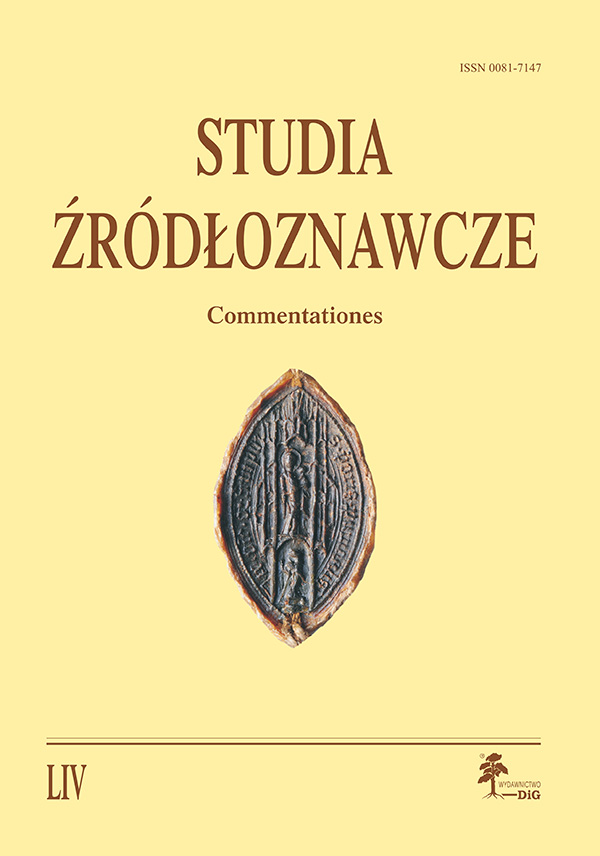Miejsce powstania i historia pasjonału theol. lat. oct. 162 ze zbiorów Biblioteki Państwowej w Berlinie
The origin and history of passionale theol. lat. oct. 162 (Staatsbibliothek Berlin)
Author(s): Miłosz SosnowskiSubject(s): History, Cultural history, Oral history, Middle Ages, 6th to 12th Centuries, 13th to 14th Centuries, History of Religion
Published by: Instytut Historii im. Tadeusza Manteuffla Polskiej Akademii Nauk
Keywords: Bruno of Querfurt; Five Brothers; codicology; palaeography; theol. lat. oct. 162; Huysburg; scriptorium; Staatsbibliothek Berlin; hagiography;
Summary/Abstract: Codex theol. lat. oct. 162 (Staatsbibliothek Berlin) plays an important role in Polish medieval studies due to its containing the sole witness of Vita Quinque Fratrum (BHL 1147) by Bruno of Querfurt. The article traces history of the codex from the origin until its discovery in the family library of Reinhard Kade, the first editor of VQF. The oldest part of the codex is a passionale (12/13th cent.), which was written at (or at least very early belonged to) the Benedictine monastery in Huysburg. In the 15th century – still in Huysburg – it was bound together with two later unrelated manuscripts to form the current composite codex. During the secularization of the monastery at the beginning of the 19th century it came into possession of Friedrich Gottlieb Julius von Bülow (1760–1831), an assessor and book collector. After von Bülow’s death his collection was put up at auction, the printed catalogue of which lists our manuscript. The codex was bought by Kade’s paternal grandfather, Anton Krüger of Dresden a noted engraver. The rest of manuscript’s history is well known. The second part of the article examines a couple of hypothetical routes, through which the source copy for our witness (i.e. a very early copy or even Bruno’s draft) or the witness itself could have been transferred to Huysburg, by tracing both direct and indirect connections of Querfurt counts and the monastery. Those hypothetical routes from Querfurt (Eilversdorf monastery?) to Huysburg – both in the diocese of Halberstadt – also try to make sense of the apparent interest that the passionale compiler had taken in Magdeburg. A brief addendum discusses the implications of the re-discovery of a codex from Ebrach, previously considered lost, that was suspected by G. Waitz to be identical with our witness or, by W. Kętrzyński and W. Meysztowicz, to be a source for Cosmas’ of Prague version of Five Brothers text. Late in the publishing process the author became aware the new description of theol. lat. oct. 162 (Beate Braun-Niehr, Manuscripta Mediaevalia database: <http://www.manuscripta-mediaevalia.de/dokumente/html/obj31101702> [access: 29.09.2016]. This new description independently and concisely provides some of the article’s findings (ownership note from Huysburg, auction catalogue of „Bibliotheca Büloviana”, lost codex of EbrachNepomuk). Still available is the previous catalogue description, which was known to the author in February 2014, during the autopsy of Huysburg codices in Berlin <http://www.manuscripta-mediaevalia.de/ dokumente/html/obj90432270,T> [access: 29.09.2016].
Journal: Studia Źródłoznawcze. Commentationes
- Issue Year: 2016
- Issue No: 54
- Page Range: 3-19
- Page Count: 17
- Language: Polish

